Module 6 A trip to the zoo.Unit 1 Does it eat meat?课件
文档属性
| 名称 | Module 6 A trip to the zoo.Unit 1 Does it eat meat?课件 | 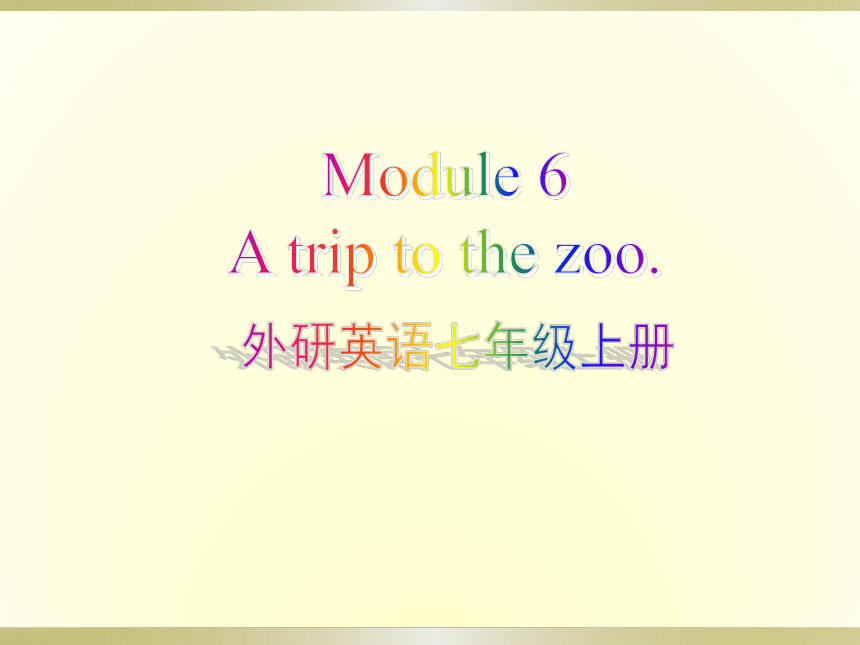 | |
| 格式 | zip | ||
| 文件大小 | 3.8MB | ||
| 资源类型 | 教案 | ||
| 版本资源 | 外研版 | ||
| 科目 | 英语 | ||
| 更新时间 | 2017-09-18 20:36:23 | ||
图片预览

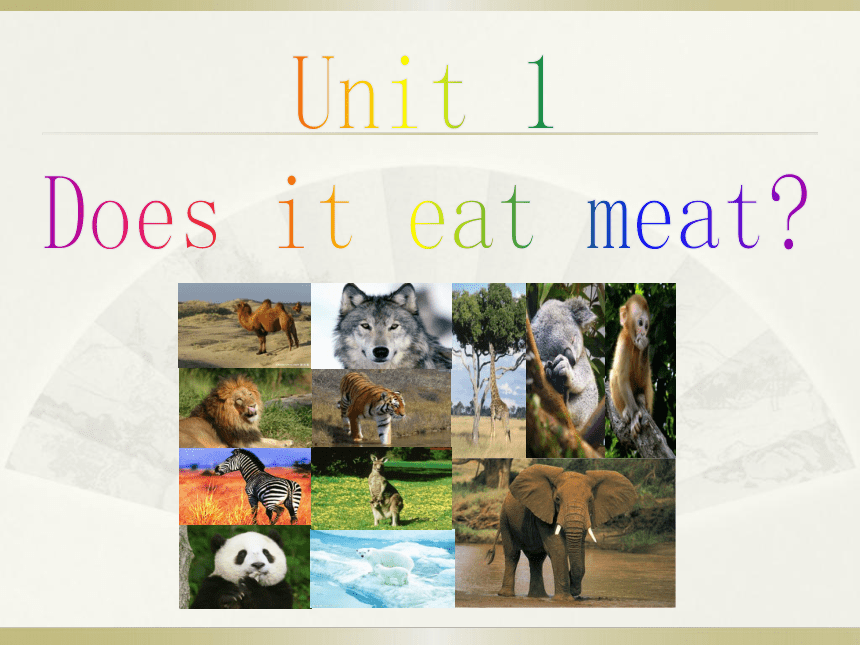

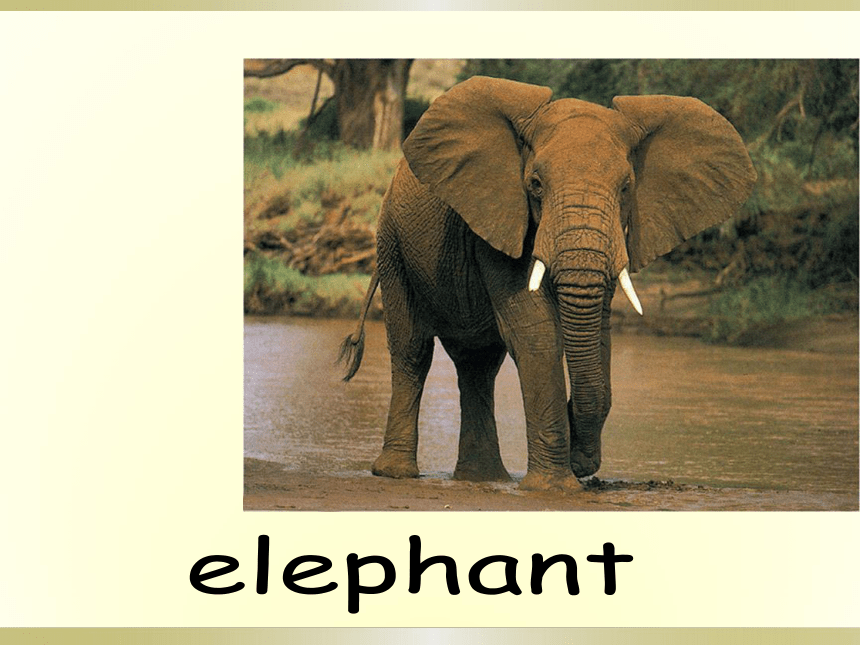
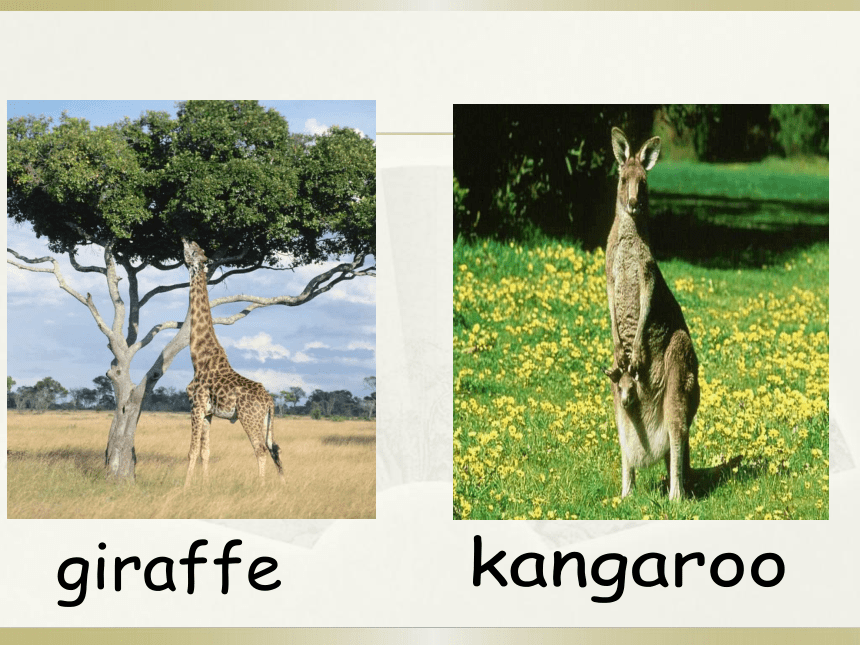


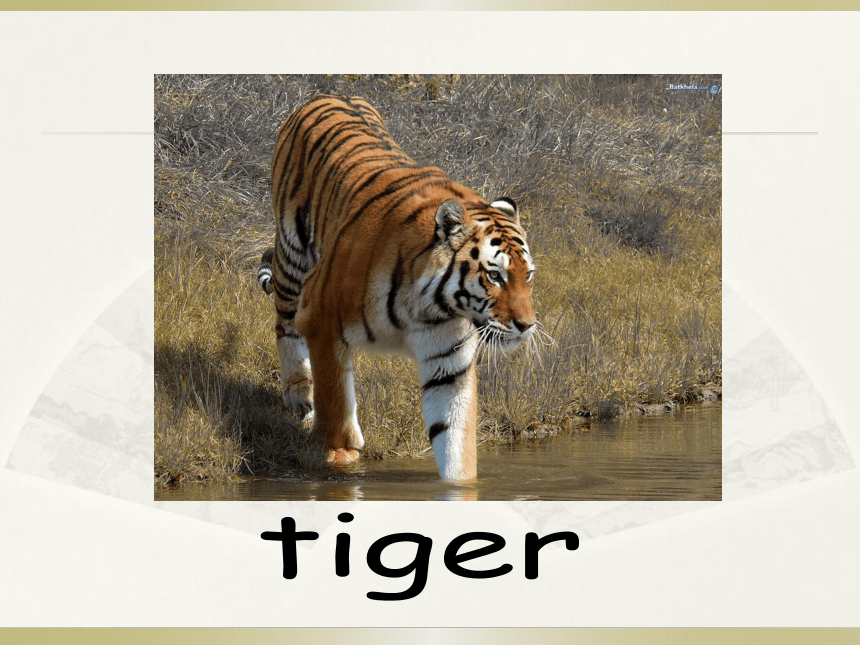

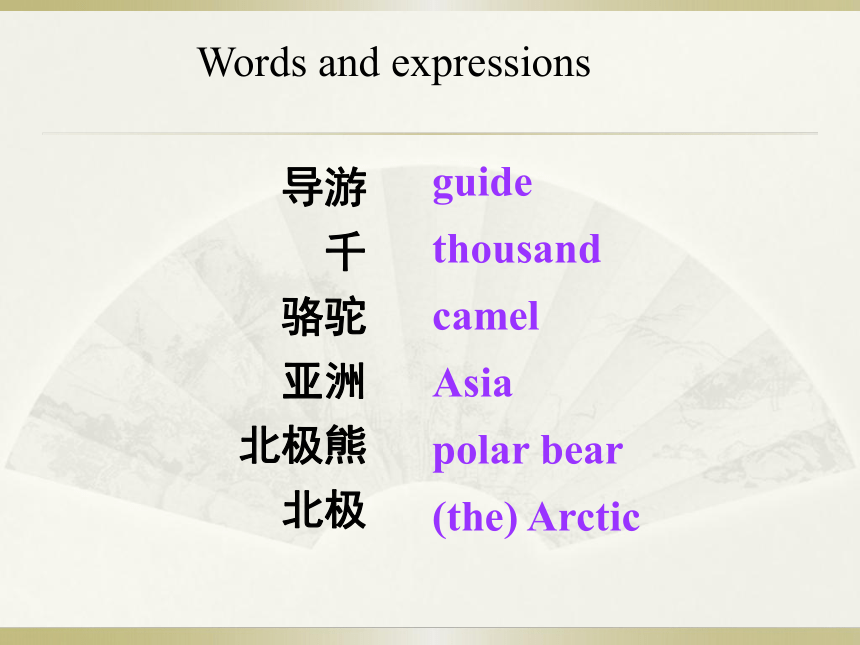
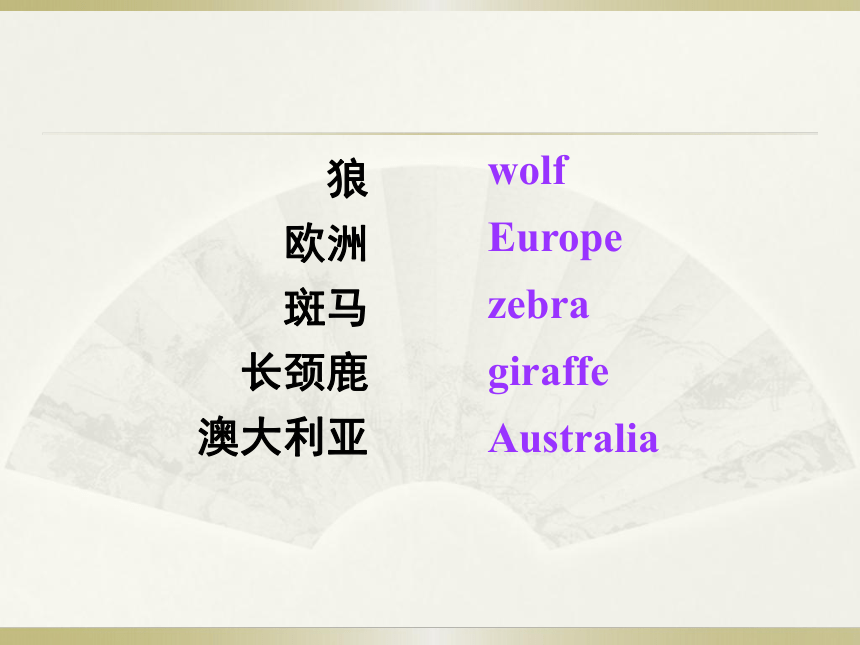
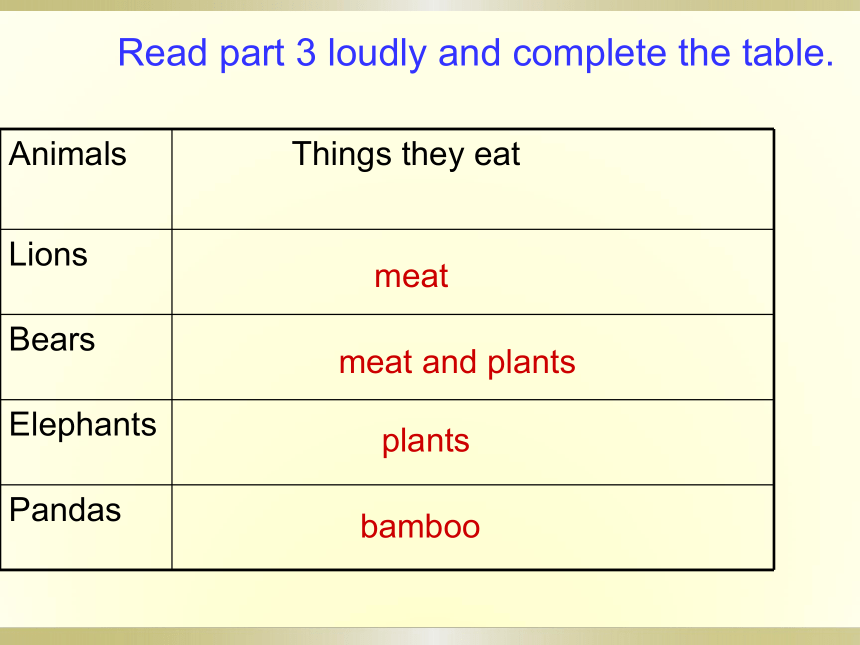
文档简介
课件30张PPT。外研英语七年级上册Module 6
A trip to the zoo.Unit 1
Does it eat meat?camelWarming upelephantkangaroogiraffelionmonkeypandatigerzebraguide
thousand
camel
Asia
polar bear
(the) Arctic导游
千
骆驼
亚洲
北极熊
北极Words and expressionswolf
Europe
zebra
giraffe
Australia狼
欧洲
斑马
长颈鹿
澳大利亚Read part 3 loudly and complete the table.meatmeat and plantsplantsbambooWork in pairs. Ask and answer questions about the animals. 1. Does the tiger eat meat?
2. Does the panda eat bamboo?Does the polar bear like to swim?
Yes, it does. It likes to swim.Yes, it does. It eats meat.Yes, it does. It eats bamboo.3. Does the tiger like to swim?
4. Does the polar bear eat bamboo?
5. Does the polar bear come from China? No, it doesn’t. It doesn’t like to swim. No, it doesn’t. It doesn’t eat bamboo.No, it doesn’t. It doesn’t come from
China.There are (1) other / many animals from different (2) country / countries in Beijing Zoo, (3) such / which as bears, giraffes and pandas. The lions are (4) funny / dangerous because they eat meat. The bears eat meat too, but also (5) plants / leaves. Elephants are (6) different / cute. They’re (7) tall / white and eat (8) plants / meat. Pandas are black and white and eat (9) bamboo / other animals. The (10) panda’s / guide’s name is Lingling. Reading in details underline the correct words.1. Sixteen thousand people visit it every
day.
它每天接待一万六千名游客。
1) thousand 是数词“千”。
表示“几千”时,通常用“数词+thousand
+名词复数”;表示“数千”时,通常用
“thousands of +名词复数”。
三千人 three thousand people
数千人 thousands of peopleLanguage Points2) ① visit 在此处是及物动词,意为“游览,参观”,后接地方。
② visit 还有“拜访,看望”之意,后接人。
eg:I often visit my grandfather.
我常常去看望爷爷。
③ visit 还可作名词用,有“参观,访问”之意,其后常跟介词to,说明去何地访问。
eg:on a visit to Japan 访问日本3) every 在这儿作形容词用,其后接单数可数名词。
eg:Every student comes here.
每个学生都到这儿来了。2. The zoo has five thousand animals—
kangaroos, polar bears, zebras, pandas and many more.
动物园有五千只动物——袋鼠,北极熊,斑马,熊猫,还有很多别的动物。
1) The zoo has five thousand animals.
可用there be 句型来表达。
There are five thousand animals in the
zoo.2) more 在句中作形容词,意为“另外的;又,再”.这时more 往往用在数词或表示数量的词,如:some, many, several等的后面。
eg: Would you like some more rice?
你还要吃些米饭吗?3. Look, there she is.看,她在那儿。
这是一个倒装句。句子中如果出现副词
here, there位于句首,常用倒装句式。
如果主语是名词,则用全倒装“Here
+系动词+名词”;如果主语是代词
则用半倒装“Here +代词+系动词”。
eg: Here is his father. 他父亲在这儿。
Here you are. 给你。 4. The kangaroo lives in Europe.
袋鼠生活在欧洲。
表示“一类”① the +名词复数
② a + 名词单数
③ 名词复数
eg: 熊猫吃竹子。
① The panda eats bamboo.
② A panda eats bamboo.
③ Pandas eat bamboo.Pair work A:What’s your favourite animal?
Does it eat plants?
B:Yes,it does.
A:Does it come from China?
B:Yes,it does.
A:Is it the panda?一、 根据所给汉语完成单词 1. There are three ________ (千)students
in this school.
2. The lion _____ (来自)America is very
strong.
3. The ___ (旅行)to Hong Kong is very
interesting.
4. The ______ (狼)are very dangerous.
5. We need a _____ (导游)to help you.
6. The trees in the ______ (热带雨林)are
very tall.thousandfromtripwolvesguidejungleExercise二、 把下列各题改为否定句和一般疑问句 1. Tom studies very hard every day.
__________________________________
__________________________________
2. We come from Shanghai.
_____________________________
_____________________________
Tom doesn’t study very hard every day. Does Tom study very hard every day?We don’t come from Shanghai.Do you come from Shanghai?3. He has time to wait.
____________________________
____________________________
4. They visit the zoo with their parents.
_______________________________
______________________________He doesn’t have time to wait. Does he have time to wait? They don’t visit the zoo with their
parents.Do they visit the zoo with their
parents? 三、根据汉语意思完成句子 1. 欢迎到北京动物园里来。
________ __ Beijing Zoo.
2. 每天它接待一万六千人。
______ ________ _____ visit it every day.
3. 袋鼠来自澳大利亚。
The kangaroo _______ ____ Australia.WelcometoSixteenthousandpeoplecomes/isfrom4. 让我们去看老虎吧!
_____ ___ and ___ a tiger.
5. 熊猫是我最喜欢的动物。
The panda is ___ ________ ______.
6. 北极熊吃肉并且喜欢游泳。
The polar bear ____ _____ and it
likes __ ____.Let’sgoseemyfavouriteanimaleatsmeattoswimHomework1.Learn the new words and expressions.
2.Preview Unit 2.Thank you.
A trip to the zoo.Unit 1
Does it eat meat?camelWarming upelephantkangaroogiraffelionmonkeypandatigerzebraguide
thousand
camel
Asia
polar bear
(the) Arctic导游
千
骆驼
亚洲
北极熊
北极Words and expressionswolf
Europe
zebra
giraffe
Australia狼
欧洲
斑马
长颈鹿
澳大利亚Read part 3 loudly and complete the table.meatmeat and plantsplantsbambooWork in pairs. Ask and answer questions about the animals. 1. Does the tiger eat meat?
2. Does the panda eat bamboo?Does the polar bear like to swim?
Yes, it does. It likes to swim.Yes, it does. It eats meat.Yes, it does. It eats bamboo.3. Does the tiger like to swim?
4. Does the polar bear eat bamboo?
5. Does the polar bear come from China? No, it doesn’t. It doesn’t like to swim. No, it doesn’t. It doesn’t eat bamboo.No, it doesn’t. It doesn’t come from
China.There are (1) other / many animals from different (2) country / countries in Beijing Zoo, (3) such / which as bears, giraffes and pandas. The lions are (4) funny / dangerous because they eat meat. The bears eat meat too, but also (5) plants / leaves. Elephants are (6) different / cute. They’re (7) tall / white and eat (8) plants / meat. Pandas are black and white and eat (9) bamboo / other animals. The (10) panda’s / guide’s name is Lingling. Reading in details underline the correct words.1. Sixteen thousand people visit it every
day.
它每天接待一万六千名游客。
1) thousand 是数词“千”。
表示“几千”时,通常用“数词+thousand
+名词复数”;表示“数千”时,通常用
“thousands of +名词复数”。
三千人 three thousand people
数千人 thousands of peopleLanguage Points2) ① visit 在此处是及物动词,意为“游览,参观”,后接地方。
② visit 还有“拜访,看望”之意,后接人。
eg:I often visit my grandfather.
我常常去看望爷爷。
③ visit 还可作名词用,有“参观,访问”之意,其后常跟介词to,说明去何地访问。
eg:on a visit to Japan 访问日本3) every 在这儿作形容词用,其后接单数可数名词。
eg:Every student comes here.
每个学生都到这儿来了。2. The zoo has five thousand animals—
kangaroos, polar bears, zebras, pandas and many more.
动物园有五千只动物——袋鼠,北极熊,斑马,熊猫,还有很多别的动物。
1) The zoo has five thousand animals.
可用there be 句型来表达。
There are five thousand animals in the
zoo.2) more 在句中作形容词,意为“另外的;又,再”.这时more 往往用在数词或表示数量的词,如:some, many, several等的后面。
eg: Would you like some more rice?
你还要吃些米饭吗?3. Look, there she is.看,她在那儿。
这是一个倒装句。句子中如果出现副词
here, there位于句首,常用倒装句式。
如果主语是名词,则用全倒装“Here
+系动词+名词”;如果主语是代词
则用半倒装“Here +代词+系动词”。
eg: Here is his father. 他父亲在这儿。
Here you are. 给你。 4. The kangaroo lives in Europe.
袋鼠生活在欧洲。
表示“一类”① the +名词复数
② a + 名词单数
③ 名词复数
eg: 熊猫吃竹子。
① The panda eats bamboo.
② A panda eats bamboo.
③ Pandas eat bamboo.Pair work A:What’s your favourite animal?
Does it eat plants?
B:Yes,it does.
A:Does it come from China?
B:Yes,it does.
A:Is it the panda?一、 根据所给汉语完成单词 1. There are three ________ (千)students
in this school.
2. The lion _____ (来自)America is very
strong.
3. The ___ (旅行)to Hong Kong is very
interesting.
4. The ______ (狼)are very dangerous.
5. We need a _____ (导游)to help you.
6. The trees in the ______ (热带雨林)are
very tall.thousandfromtripwolvesguidejungleExercise二、 把下列各题改为否定句和一般疑问句 1. Tom studies very hard every day.
__________________________________
__________________________________
2. We come from Shanghai.
_____________________________
_____________________________
Tom doesn’t study very hard every day. Does Tom study very hard every day?We don’t come from Shanghai.Do you come from Shanghai?3. He has time to wait.
____________________________
____________________________
4. They visit the zoo with their parents.
_______________________________
______________________________He doesn’t have time to wait. Does he have time to wait? They don’t visit the zoo with their
parents.Do they visit the zoo with their
parents? 三、根据汉语意思完成句子 1. 欢迎到北京动物园里来。
________ __ Beijing Zoo.
2. 每天它接待一万六千人。
______ ________ _____ visit it every day.
3. 袋鼠来自澳大利亚。
The kangaroo _______ ____ Australia.WelcometoSixteenthousandpeoplecomes/isfrom4. 让我们去看老虎吧!
_____ ___ and ___ a tiger.
5. 熊猫是我最喜欢的动物。
The panda is ___ ________ ______.
6. 北极熊吃肉并且喜欢游泳。
The polar bear ____ _____ and it
likes __ ____.Let’sgoseemyfavouriteanimaleatsmeattoswimHomework1.Learn the new words and expressions.
2.Preview Unit 2.Thank you.
同课章节目录
- Starte
- Module 1 My teacher and my friends
- Module 2 My English lesson
- Module 3 My English book
- Module 4 My everyday life
- Module 1 My classmates
- Unit 1 Nice to meet you.
- Unit 2 I'm Wang Lingling and I'm thirteen years ol
- Unit 3 Language in use.
- Module 2 My family
- Unit 1 Is this your mum?
- Unit 2 These are my parents.
- Unit 3 Language in use.
- Module 3 My school
- Unit 1 There are thirty students in my class.
- Unit 2 The library is on the left of the playgroun
- Unit 3 Language in use.
- Module 4 Healthy food
- Unit 1 We've got lots of apples.
- Unit 2 Is your food and drink healthy?
- Unit 3 Language in use.
- Module 5 My school day
- Unit 1 I love history.
- Unit 2 We start work at nine o'clock.
- Unit 3 Language in use.
- Revision module A
- Module 6 A trip to the zoo
- Unit 1 Does it eat meat?
- Unit 2 The tiger lives in Asia.
- Unit 3 Language in use.
- Module 7 Computers
- Unit 1 How do I write my homework on the computer?
- Unit 2 When do you use a computer?
- Unit 3 Language in use.
- Module 8 Choosing presents
- Unit 1 I always like birthday parties.
- Unit 2 She often goes to concerts.
- Unit 3 Language in use.
- Module 9 People and places
- Unit 1 We're enjoying the school trip a lot.
- Unit 2 They're waiting for buses or trains.
- Unit 3 Language in use.
- Module 10 Spring Festival
- Unit 1 Are you getting ready for Spring Festival?
- Unit 2 My mother's cleaning our houses and sweepin
- Unit 3 Language in use.
- Revision module B
